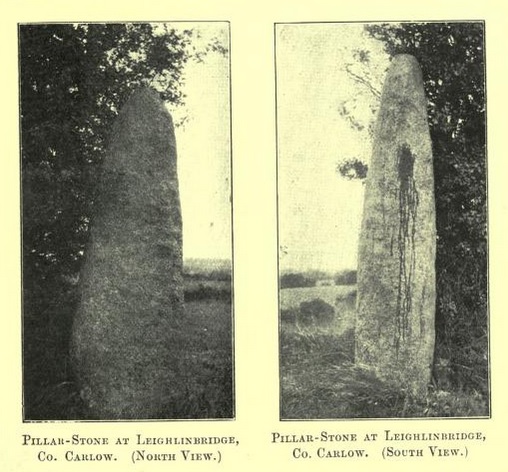
From ‘Notes on a gallaun, or pillar-stone, at Leighlinbridge, County Carlow’ by Sir Edmund T Bewley. In the Journal of the Royal Society of Antiquaries of Ireland v35, 1905.
archive.org/stream/journalofroyalso35royauoft#page/64/mode/2up

From ‘Notes on a gallaun, or pillar-stone, at Leighlinbridge, County Carlow’ by Sir Edmund T Bewley. In the Journal of the Royal Society of Antiquaries of Ireland v35, 1905.
archive.org/stream/journalofroyalso35royauoft#page/64/mode/2up

The pencil is held up in the bowl of a cup-mark. There are three cup-marks on the west side of the stone, all above head height, eroded and about 3 centimetres deep.

Stone and tower

Looking west
From inquiries that Canon Willcocks was good enough to get made for me amongst some of the oldest inhabitants of the district, it appears that the pillar-stone was always known as “the Clonegall stone.” Gall is an ancient term for a pillar-stone; and “Clonegall,” in the present instance, would no doubt signify “pillar-stone meadow.”































